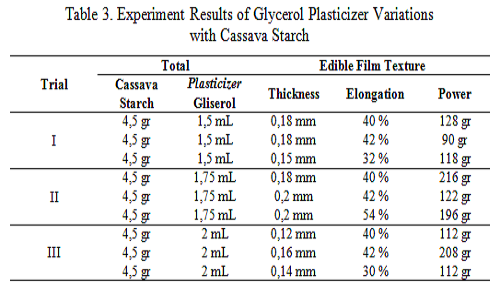
Practicum Design for Making Edible Film from Starch Based on STEM to Improve Student Creativity in Learning Polymer Topics
Abstract
One of the 21st century skills that students need is creativity. Creativity in Indonesia is still lacking based on several previous studies. Therefore, learning innovations are needed that can increase student creativity, namely through STEM-based practicum learning. This STEM-based practicum learning integrates aspects of Science, Technology, Engineering and Mathematics in practicum learning. This research aims to produce a STEM-based practicum design for making edible films from starch poured in worksheets. The research method used the DBR (Design Based Research) method. The steps of this research are: 1) Design of practicum design, 2) Optimization results of practicum design for making edible film from starch, 3) Analysis of the relationship between the curriculum on the topic of polymer with STEM and creativity aspects, 4) Analysis of the existence of practicum procedures for making edible films in high school chemistry books class XII, 5) Expert validation. The data collection technique is done by studying the literature, optimizing the experimental results of the practicum design and the results of validation. Data analysis was performed by calculating the percentage of each aspect and interpreting it in the validation criteria table and the result was 91% with very valid categories.
Keywords
Full Text:
PDFReferences
Clark, S. K. (2013). Research by Design: Design-Based Research and the Higher Degree Research student. Journal of Learning Design, 2(6), 26-32.
Hepytrianti. (2014). Profil Kemampuan Berpikir Kritis dan Kreatif Siswa Kelas XI IPA SMAN Kota Bengkulu. Bengkulu: Skripsi Universitas Bengkulu (tidak diterbitkan).
Jumi, W., Suleman, N., & Tangio, J. S. (2018). Identifikasi Kemampuan Berpikir Kreatif Siswa Menggunakan Soal Tes Open Ended Problem Pada Materi Elektrokimia di SMA Negeri 1 Telaga. Jurnal Entropi, 13(1), 35-43.
Kemendikbud. (2016). Model Silabus Mata Pelajaran Sekolah Menengah Atas/Madrasah Aliyah. Jakarta: Kemendikbud.
Kemendikbud. (2018). Permendikbud Nomor 36 Tentang Kurikulum 2013. Jakarta: Kemendikbud.
National Research Council. (2011). Successful K-12 STEM Education: Identifying Effective Approaches in Science, Technology, Engineering, and Mathematics. Washington : The National Academies Press.
Rahmi, D., Rusman, & Erlidawati. (2016). Identifikasi Kemampuan Berpikir Kreatif Siswa Kelas XI Menggunakan Soal Tes Open-Ended Problem Pada Materi Koloid Di SMA/MA Kota Banda Aceh. Jurnal Ilmiah Mahasiswa Pendidikan Kimia, 1(4), 60-69.
Riduwan. (2014). Dasar-dasar Statistika. Bandung: Alfabeta.
Skurtys, O., Acevedo, C., Pedreschi, F., Enrione, J., Osorio, F., & Aguilera, J. (2010). Food Hydrocolloid Edible Films and Coatings. Santiago: Department of Food Science and Technology, Universitas de Santiago de Chile.
Sutresna, N., Solehudin, D., & Herlina, T. (2016). Buku Siswa Aktif dan Kreatif Belajar Kimia SMA/MA Kelas XII. Jakarta: Grafindo Media Pratama.
Sudarmo, U. (2013). Kimia untuk SMA/MA Kelas XII. Bandung: Erlangga.
Trilling, B., & Fadel, C. (2012). Century skills: Learning for life in our times. New York: Jossey Bass.
Umiyati, N. (2016). Buku Siswa Kimia untuk SMA/MA XII. Bandung: Mediatama.
Watoni, A. H., Kurniawati, D., & Juniatri, M. (2018). Kimia untuk Siswa SMA/MA Kelas XII. Bandung: Yrama Widia.
Watoni, A. H., & Juniatri, M. (2015). Kimia untuk Siswa SMA/MA Kelas XII. Bandung: Yrama Widia
Zimmerman, E. (2010). Creativity and Art Education: A Personal Journey in Four Acts. Art Education, 63, 84-92.
DOI: http://dx.doi.org/10.31258/jes.5.1.p.178-187
Refbacks
- There are currently no refbacks.
Copyright (c) 2021 Tri Suharti Jupita, Mulyati Arifin, Hayat Solihin

This work is licensed under a Creative Commons Attribution 4.0 International License.
Publisher: FKIP Universitas Riau












